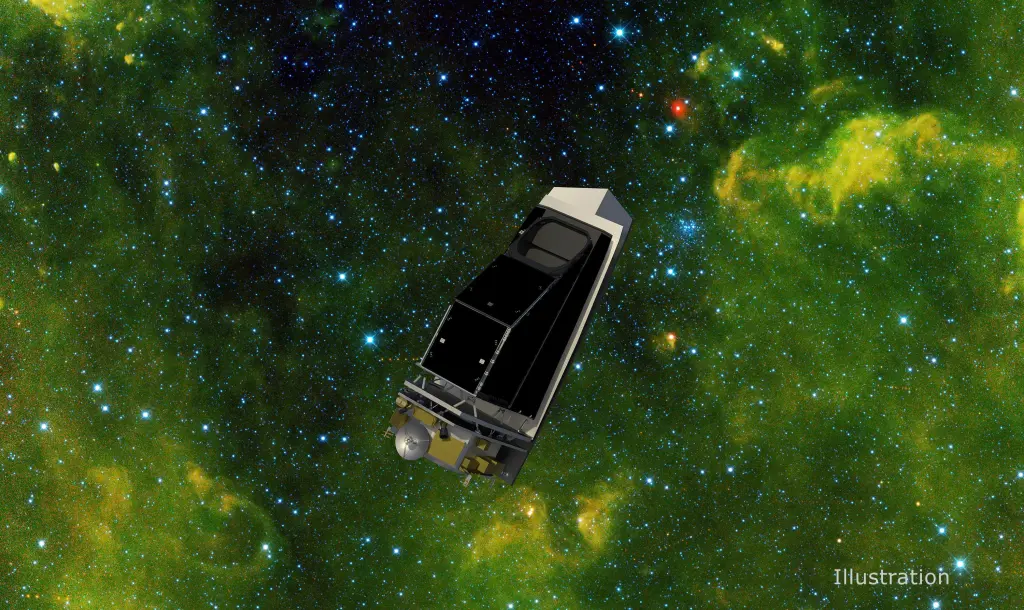
In an era where space exploration is accelerating at an unprecedented pace, NASA has taken another major step in ensuring the safety of our planet. The agency has officially partnered with SpaceX to launch the Near-Earth Object Surveyor (NEO Surveyor) mission, a groundbreaking project aimed at detecting and monitoring asteroids and comets that could pose a threat to Earth. Scheduled for launch no earlier than September 2027 aboard a SpaceX Falcon 9 rocket, NEO Surveyor will serve as a crucial element of planetary defense. This mission aligns with NASA’s ongoing efforts to identify and mitigate risks posed by Near-Earth Objects (NEOs), reinforcing the agency’s commitment to protecting our world from potential celestial hazards.
Understanding the NEO Surveyor Mission
The Purpose of NEO Surveyor
NEO Surveyor is an infrared space telescope specifically designed to detect and characterize potentially hazardous asteroids and comets. The primary goal of the mission is to locate and track NEOs that come within 30 million miles of Earth’s orbit. By gathering critical data about these objects, the mission will help scientists assess the likelihood of potential impacts and develop strategies to mitigate possible threats.
NASA’s decision to launch NEO Surveyor is driven by the need for a more comprehensive and proactive approach to planetary defense. Currently, most asteroid detection efforts rely on ground-based telescopes, which have limitations, particularly when identifying dark or hard-to-spot objects. Infrared technology, on the other hand, allows for superior detection capabilities, making NEO Surveyor an essential advancement in our planetary defense arsenal.
Technical Specifications
NEO Surveyor is equipped with a 50-centimeter (nearly 20-inch) diameter telescope that operates in two infrared wavelengths. This advanced heat-sensing technology enables the detection of asteroids that are too dim to be seen with visible-light telescopes. By utilizing infrared imaging, NEO Surveyor can accurately measure asteroid sizes, orbits, and surface properties, offering a more detailed picture of potential threats.
The spacecraft is designed to survey the entire sky systematically, focusing on finding asteroids that are 140 meters (460 feet) or larger. These are classified as potentially hazardous because they have the potential to cause significant regional destruction if they were to impact Earth. NASA aims to locate at least two-thirds of these unknown NEOs during NEO Surveyor’s five-year primary mission.
The Role of SpaceX in the Mission
NASA’s Partnership with SpaceX
NASA’s selection of SpaceX as the launch provider for NEO Surveyor is a testament to the company’s reliability and experience in space transportation. SpaceX has emerged as one of the leading private aerospace companies, successfully launching numerous missions for NASA, commercial clients, and international partners. The Falcon 9 rocket, which will carry NEO Surveyor into space, is known for its high success rate and cost efficiency.
The partnership between NASA and SpaceX represents a seamless collaboration between the public and private sectors. By leveraging SpaceX’s proven launch capabilities, NASA can ensure a smooth and timely deployment of NEO Surveyor, minimizing risks and optimizing mission success. SpaceX’s experience with launching scientific instruments and planetary missions makes it the ideal candidate for this critical endeavor.
The Falcon 9 Advantage
The Falcon 9 rocket is a reusable launch vehicle that has become a workhorse for space missions. Its capability to carry payloads efficiently and its high reliability make it a preferred choice for launching scientific instruments into space. For NEO Surveyor, the Falcon 9 will provide the necessary thrust and stability to transport the spacecraft beyond Earth’s atmosphere and into its optimal observational position.
SpaceX’s reusable rocket technology not only reduces costs but also enables a sustainable approach to space exploration. This aligns with NASA’s long-term vision of making planetary defense initiatives more economically viable while maximizing efficiency.
The Importance of Planetary Defense
Understanding Near-Earth Objects (NEOs)
Near-Earth Objects (NEOs) are asteroids and comets that orbit the Sun and come within 30 million miles of Earth’s trajectory. While the majority of these celestial bodies pose no immediate threat, some are classified as potentially hazardous due to their size and proximity to Earth.
A significant asteroid impact on Earth could have devastating consequences, ranging from regional destruction to global environmental effects. Although large-scale impacts are rare, history has shown that they can occur. For instance, the Chicxulub asteroid impact that led to the extinction of the dinosaurs 66 million years ago serves as a stark reminder of the potential dangers posed by NEOs.
Advancements in Detection and Monitoring
NASA has been actively working on planetary defense initiatives for decades. The establishment of the Planetary Defense Coordination Office (PDCO) highlights the agency’s commitment to identifying and mitigating potential asteroid threats. NEO Surveyor is a direct result of these efforts, representing a technological leap in asteroid detection and monitoring.
Unlike traditional telescopes, which rely on visible light, NEO Surveyor’s infrared capabilities enable it to detect asteroids that are difficult to observe using conventional methods. This allows for a more comprehensive assessment of potential threats, ensuring that scientists have ample time to develop countermeasures if needed.
The Broader Implications of the NEO Surveyor Mission
Enhancing Scientific Knowledge
Beyond planetary defense, NEO Surveyor will contribute valuable insights into the nature and composition of asteroids and comets. Understanding these celestial bodies is crucial for unraveling the history of our solar system. By analyzing the chemical and structural properties of NEOs, scientists can gain a deeper understanding of planetary formation and the processes that shaped our cosmic neighborhood.
Space Exploration and Resource Utilization
The mission could also have implications for future space exploration and resource utilization. Some asteroids contain valuable minerals and elements that could be harvested for use in space-based industries. As humanity moves toward expanding its presence beyond Earth, missions like NEO Surveyor will provide essential data for identifying potential resource-rich targets for future missions.
Public Awareness and Global Collaboration
NEO Surveyor’s launch and subsequent findings will help raise public awareness about the importance of planetary defense. The mission underscores the need for continued investment in space research and international collaboration to safeguard our planet.
Global cooperation is essential in addressing the challenges posed by NEOs. NASA’s work with international space agencies and private sector partners like SpaceX highlights the collective responsibility of humanity in ensuring Earth’s safety from cosmic threats.
Conclusion
The partnership between NASA and SpaceX to launch the NEO Surveyor mission marks a significant milestone in planetary defense. By leveraging advanced infrared technology and SpaceX’s reliable launch capabilities, NASA is taking proactive steps to detect and monitor potential asteroid threats.
As space exploration continues to evolve, missions like NEO Surveyor demonstrate the importance of investing in planetary defense initiatives. With its ability to detect and characterize near-Earth objects with unprecedented accuracy, NEO Surveyor will serve as a critical tool in our ongoing efforts to protect our planet from potential celestial hazards.
In the coming years, as NEO Surveyor embarks on its mission, the insights gained will not only enhance our understanding of the cosmos but also contribute to the safety and security of future generations. Through collaboration, innovation, and scientific exploration, we are taking decisive steps toward ensuring that Earth remains shielded from the dangers of space. NASA’s partnership with SpaceX is a shining example of what can be achieved when vision, technology, and expertise come together for the greater good of humanity.
